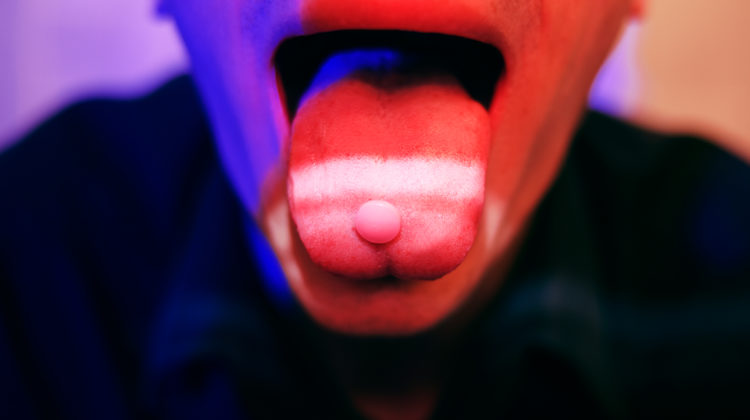
In 2012, the desire to be larger than life was overwhelming John Saul. The pressure and stress were taking a huge toll. Saul owned a yacht brokerage in Sausalito, California until the stress became untenable and snapped his immune system. He was then diagnosed with Scleroderma, also known as Systemic Sclerosis. This life-threatening auto-immune disease makes his body overproduce collagen, causing his skin and several internal organs to tighten and harden.
After dealing with this pain for three and a half years, he made a decision that would change his life. In 2015, Saul was accepted into an MDMA-assisted psychotherapy experience conducted by MAPS (Multidisciplinary Association for Psychedelic Studies) for the treatment of anxiety due to his life-threatening illness. In order for him to participate in the study, he needed to quit using his prescribed opioid medication. He had been taking this medication since he was diagnosed, now going ‘cold turkey’ on his source or relief. “Three and a half years of regular opioid use and you just stop like that – you go through a tremendous withdrawal,” Saul said.
Saul decided to try out psychedelics for his pain, but this was not his first time engaging with them. His early experiences began when he was just a curious teenager. Born into Native American heritage, Saul had been interested in learning about peyote and other psychedelics through reading books written by Carlos Castaneda. Saul’s grandfather was an essential part in establishing the Native American church in the 1950s, which used peyote as a religious sacrament. “My heritage and my curiosity kind of coalesced and made me interested in psychedelics,” he said.
But after a few years of educating himself on the topic, Saul dropped psychedelics before really diving in to pursue athletics. It was not until the MAPS study that his curiosity re-sparked his interest in psychedelics. “At age 47, I knew the power of what they can do in terms of saving your life,” he said.
At the beginning of the study, Saul was given placebos in his first two sessions. It was not until his third session that he finally took MDMA and had a monumental, spiritual experience. This is when he took the opportunity to reevaluate his life and ultimately choose life over death.
He says that his therapists, Julane Andries and Dr. Phil Wolfson, during the study were some of the best that MAPS could provide. “Some of the most powerful parts of the therapy were when my therapists shared stories from their own life,” he said. Through listening to his therapists’ own stories, they helped Saul through emotions of grief, anger, resentment and facing death.
He was one of eighteen participants in this psychotherapy experience. He says that he and the other members grew close together through the process. “We pretty much agree that the study saved our lives,” he said. “It certainly saved my life.”
After the study, Saul formed a peer support group with other participants coming out of the study. He and the other participants had to contact each other on their own due to confidentiality rules of the study.
Many of the different participants of the MAPS study had feelings of abandonment and isolation after the study ended. “You’re held in this nest of safety and healing, and then the study is over and you’re kind of just dropped out on the street,” Saul said.
Although his therapists maintained an open-door policy, MAPS, as a study sponsor, did not offer additional help to the participants after the study so as to maintain accurate data. Saul and the other participants lent each other shoulders to lean on. “We helped each other in a peer support fashion to kind of get through that rough period after the study,” he said.
Following his calling after the study, Saul founded Body Awareness Integration and is a nervous system and psychedelic integration coach as a certified instructor of AYRx (aerial yoga therapeutic practice). “I basically had a conversation with some divine entity during the study that advised me to help people,” he said. “And I said, ‘Sign me up.’”
His coaching is a resource for patients dealing with depression, anxiety and chronic pain. He also was one of the first people to host online psychedelic peer support circles when he began in 2016. “I do for others what I did for myself to help me get better from a chronic illness,” Saul said.
Saul’s work allows people agency over their own physical state, meaning that his patients can act freely and independently. Through his therapy, he helps them reduce pain, anxiety, and depression and down-regulate their nervous system. “It helps them in a day-to-day existence, to stay calm and as clear-headed as possible,” he said.
Nowadays, Saul indulges in different psychedelic treatments several times a year. Him and his colleagues help guide each other through their psychedelic treatments. They also take different classes together to help them work with trauma and emotions.
Prior to his diagnosis, Saul was very active and took part in many programs such as weight lifting, yoga and sailing. He even was a division one wrestler at Cal State Fullerton when he attended the school. But Scleroderma had stripped this lifestyle away from him.
When he decided to enroll in the MAPS study, he wanted to change his life for good.
Although there is no cure for his disease, his powerful experiences with psychedelic treatment in the study gave Saul his life back, and he has made the most of it ever since.


Man that’s heavy. Very good read.